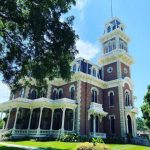9 Historic Gas Stations in Cedar Rapids, Iowa
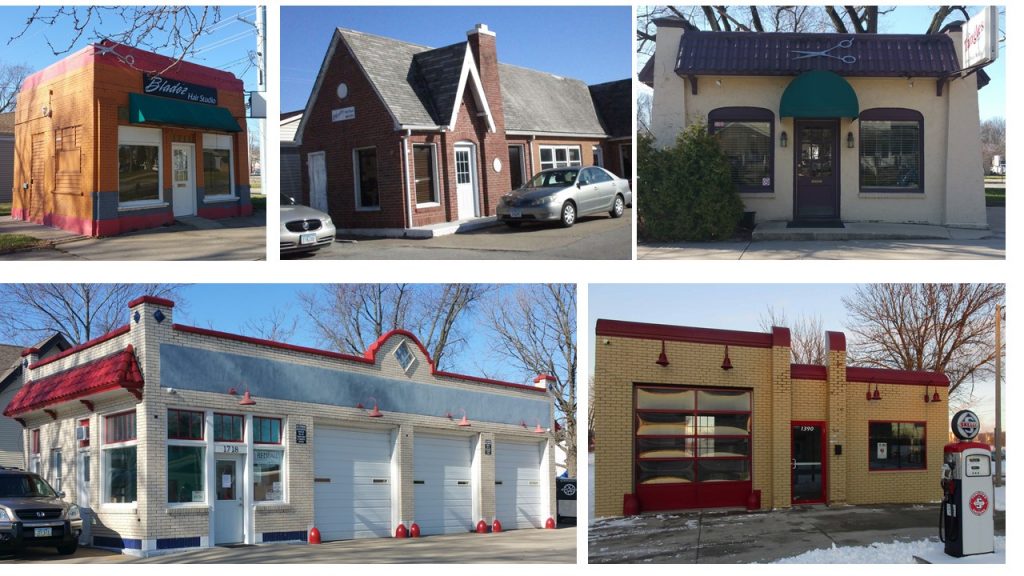
Pioneers of the automobile and lovers of the open road, Americans love their cars. The U.S. landscape is crisscrossed by highways and interstates. But one thing you might overlook is the number of early gas stations that dot our cities. These petite structures are unique clues to the past – they mark the location of once-busy thoroughfares, neighborhoods, and intersections.
Because these gas stations are simple buildings, they are easily repurposed into everything from repair shops and hair salons to offices and retail stores. For example, the original Ben & Jerry’s shop was in a converted gas station. No matter where you live, I bet you drive by one of these old stations every day.
Cedar Rapids has a number of 1930s gas stations, especially in the downtown area. Enjoy this virtual road trip! I also included addresses in case you need a fun drive during this time of social distancing.
Cleveland Area Neighborhood – 1703 and 1711 B Ave NW
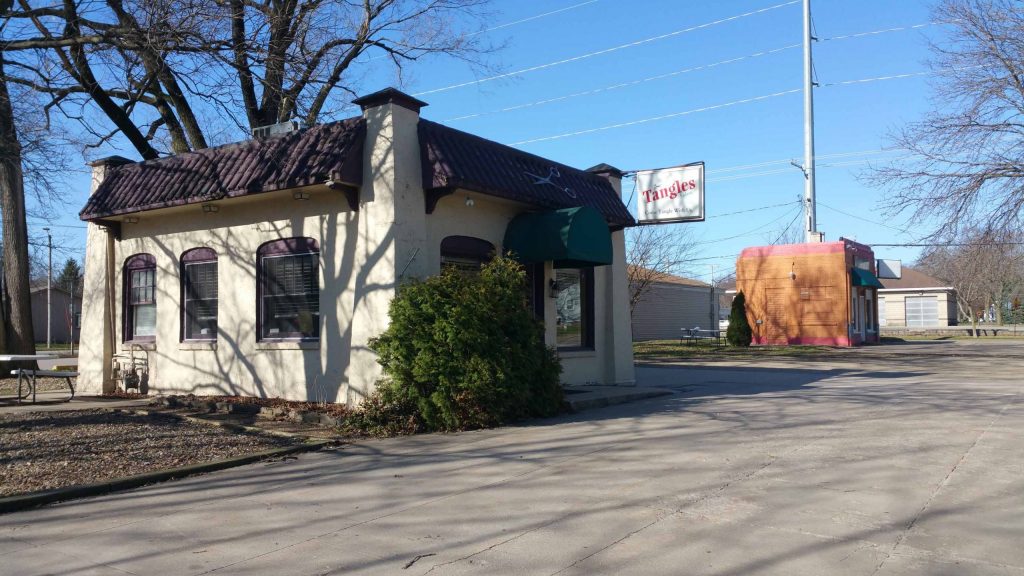
These side-by-side cuties are both from the early 1930s. Though their architecture is a basic square, you can see some Spanish Revival details on these, included the tiled roof and stucco exterior on 1703 and the terracotta flowers on 1711. These buildings are now home to hair salons.
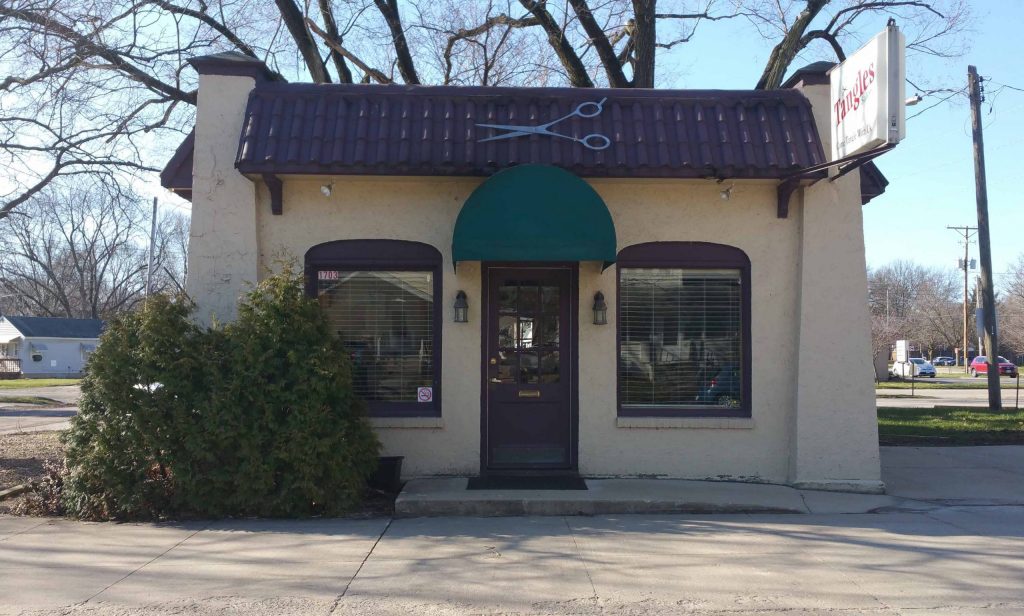
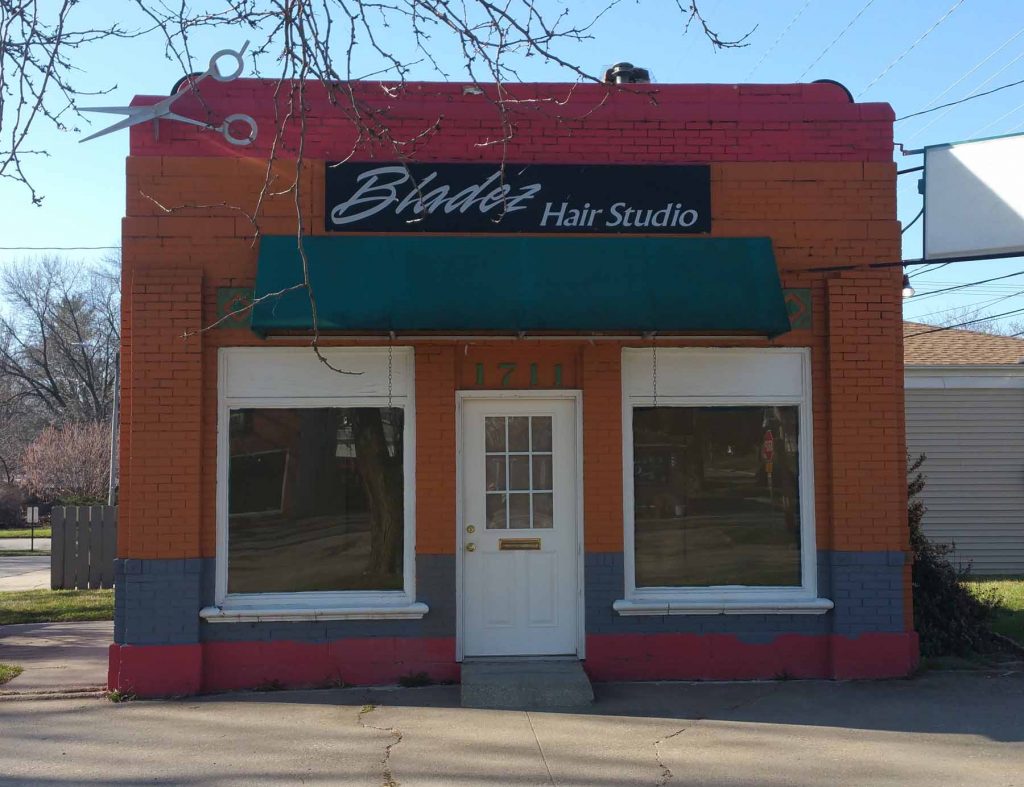

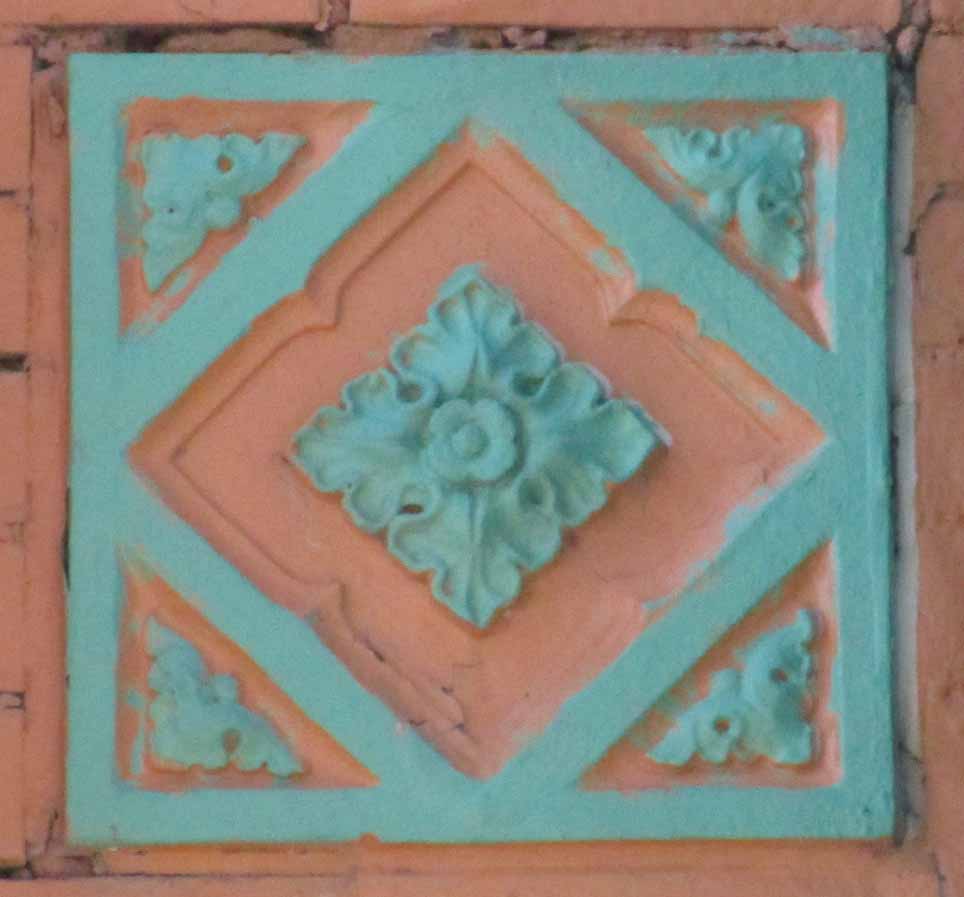
Why are they located right in the middle of a residential neighborhood? Because Johnson Ave NW, just one block away, used to be the Lincoln Highway. This was the first transcontinental road in the U.S., dedicated in 1913. That means it predates its more famous cousins like Route 66 or U.S. Highway 1 by a solid decade! Iowa’s portion of the Lincoln Highway measures over 460 miles, so old stations like these are extremely common along the roadside. The Lincoln Highway is also one of 14 scenic byways in Iowa – look for these signs!
 Kingston Neighborhood – 528 2nd Ave SW
Kingston Neighborhood – 528 2nd Ave SW

Currently repurposed as an auto repair shop, this 1930 site is an old Phillips 66. Many major oil companies wanted their stations to have a signature look yet blend in with the surrounding neighborhood. Stations had a distinctly residential design – so different than our gas stations today! This borrows from the Tudor Cottage style, including a charming chimney and a steep gable over the entrance.
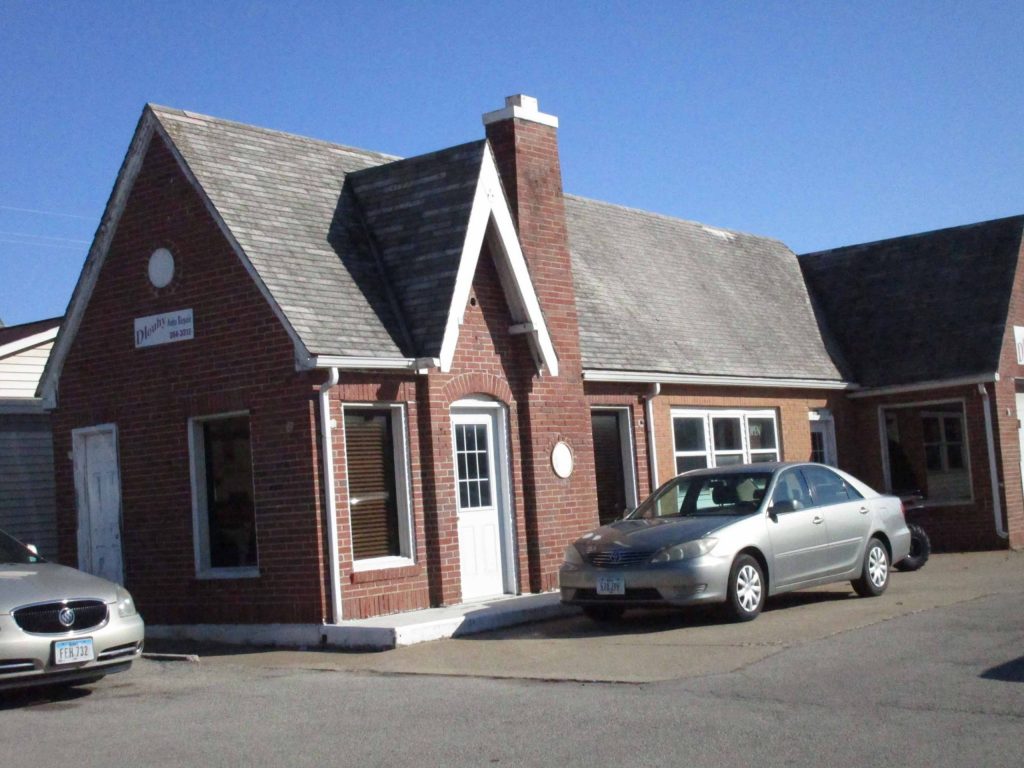
“The move toward the house-type station was also a sign of growing competition within the oil industry as businesses worked to garner customer trust and loyalty. Companies developed distinctive brands and signature building forms. Pure Oil, for example was well-known for its English Cottage stations, while Standard Oil favored Colonial Revival designs. The effort to develop iconic signage and stations foreshadowed all-encompassing branding campaigns that dominated gas station design later in the century” (1).
This station was on the second iteration of the Lincoln Highway through Cedar Rapids, which stretched along 2nd Ave on both sides of the river.
Czech Village Neighborhood – 1718 C St SW
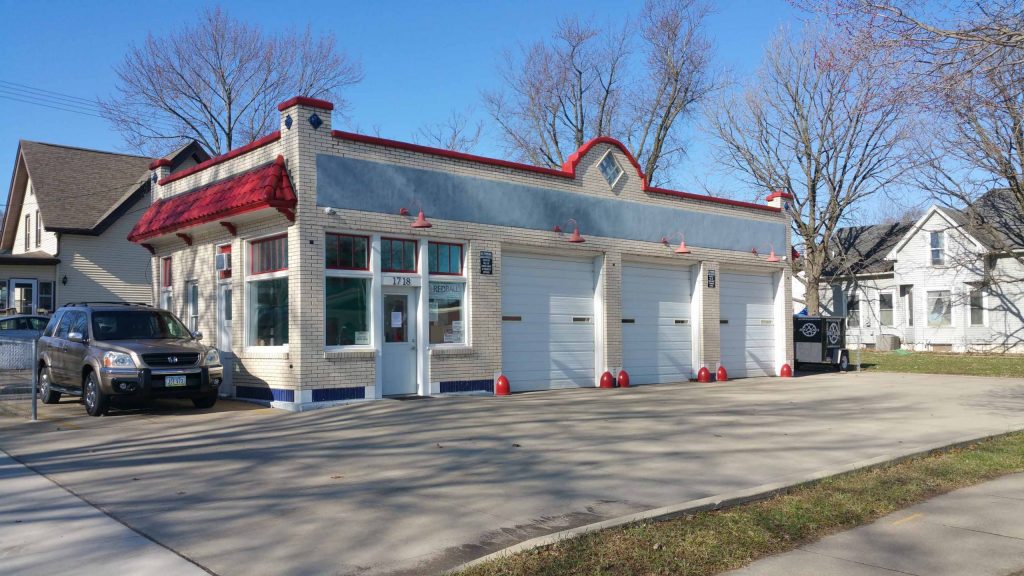
This 1932 station is another example of Mission Revival. It’s located near an intersection with easy access to the Douglas Starch Works manufacturing plant (which was Penford for many years and is currently Ingredion) and the former Sinclair meatpacking plant. It would have easily served both businesses and residential customers. It is now used for a screen printing business.
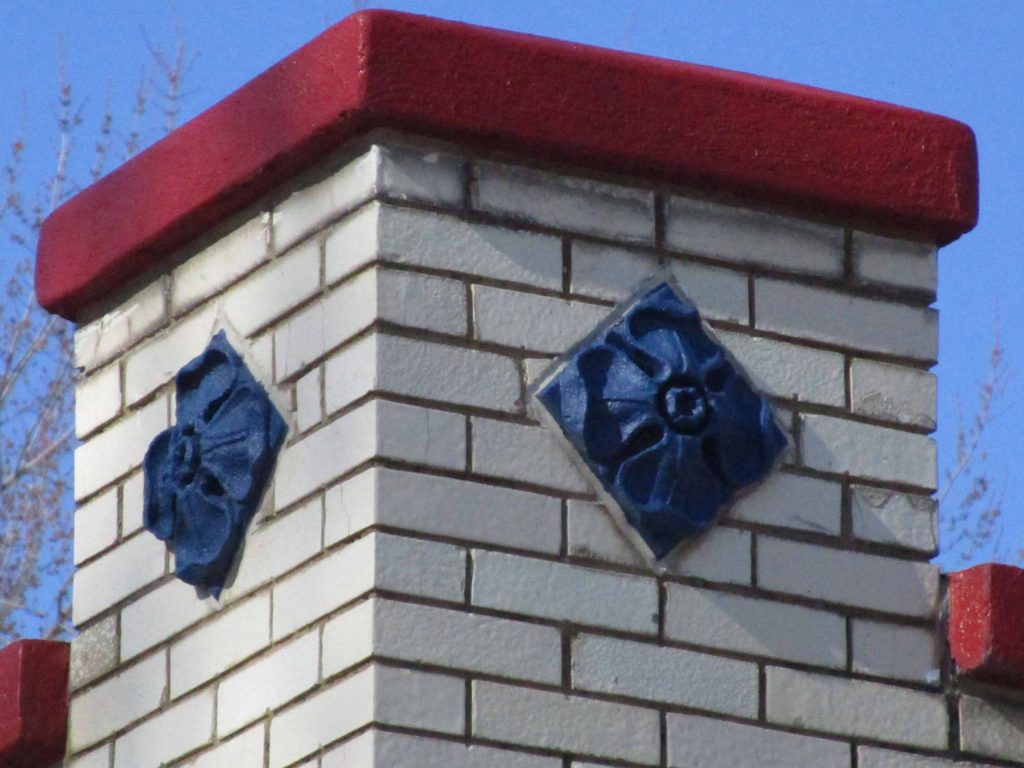
“Departing notably from elaborate revival style stations, a new form appeared in the early 1930s, the box station. Blending Art Moderne and International Style motifs, box stations featured flat-roofs and unadorned exteriors of stucco, terra cotta, porcelain enamel steel, or structural glass panels. With their glossy white exteriors and scientifically-designed lighting schemes, box stations were meant to attract attention” (1).
NewBo Neighborhood SE – 227 16th Ave SE and 1390 3rd St SE
 This pair of former service stations at the intersection of 16th Ave SE and 3rd St SE is the perfect example of “hidden” car history. Currently at the quieter south end of the NewBo neighborhood, you wouldn’t guess that these streets were once a highway!
This pair of former service stations at the intersection of 16th Ave SE and 3rd St SE is the perfect example of “hidden” car history. Currently at the quieter south end of the NewBo neighborhood, you wouldn’t guess that these streets were once a highway!
We take for granted that our highway system is just that – an organized initiative overseen by a government department. But it was quite the opposite in the early days of the automobile!
“Frequently, associations and community groups designated route names and erected their own markers. These routes carried names such as the Star Route, Red Ball Route, Tall Corn Highway and Lincoln Highway. Markers were painted on posts, poles, rocks and buildings. Eventually, there were so many different markers that travelers became almost as confused as they were before the signs went up.” (2).
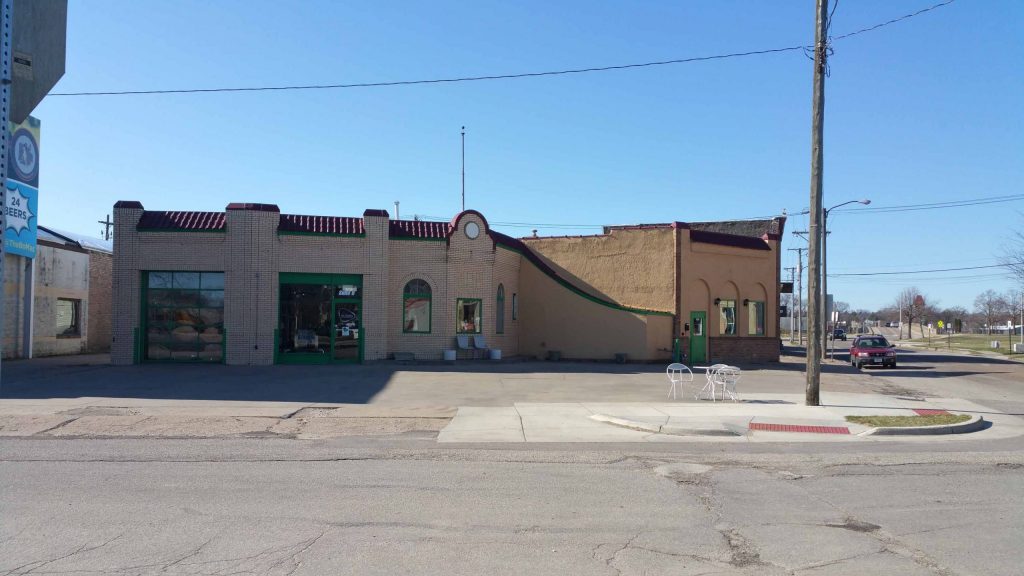
The state finally passed the Iowa Highway Route Registration Act in 1913. It required all routes over 25 miles to be registered with the Iowa State Highway Commission. The act also granted the commission final say on all the route names, markings, and colors (3).
These two stations mark a junction on the Red Ball Route, which stretched from the Twin Cities in Minnesota to St. Louis. It was commissioned in 1913 and included Iowa cities such as Osage, Waterloo, and Keokuk (4). If you know Eastern Iowa, you’ll recognize this path as today’s Interstate 218 (also called the Avenue of the Saints).
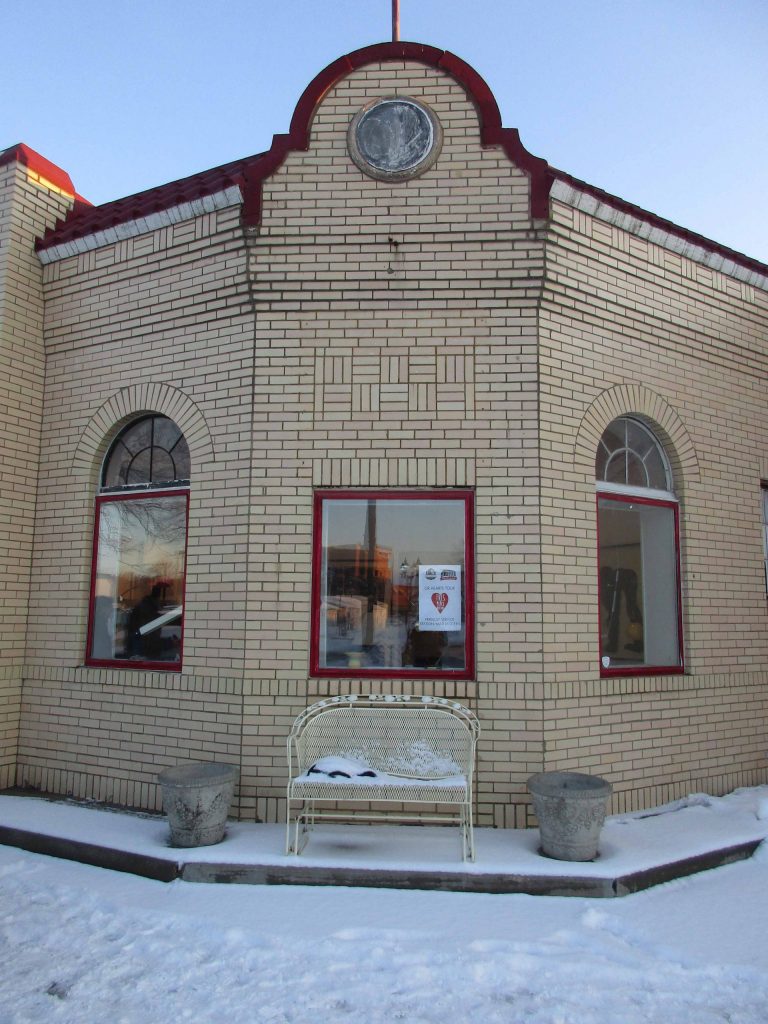
227 16th Ave SE has been repurposed into a furniture shop (Mad Modern). It was built in 1935 as a Friendly Service Station. It’s done in the Mission Revival Style: the light brick, arched parapets, red terracotta roof tiles, and arched windows. I love all of the brick detailing over the windows, along the roofline, and in the center (which would have been over the original doorway).
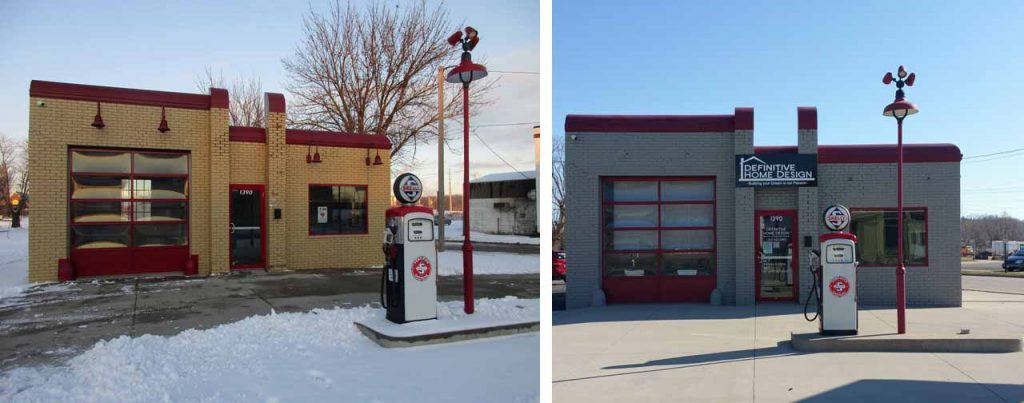
This building at 1390 3rd St SE was built in 1938. It was originally a Skelly Oil gas station, and its lovely sign has been preserved (left – you can read about the full restoration here). The present owner has reversed the facade restoration (right) and that’s all I have to say about that.
Oak Hill Neighborhood – 624 and 629 12th Ave SE
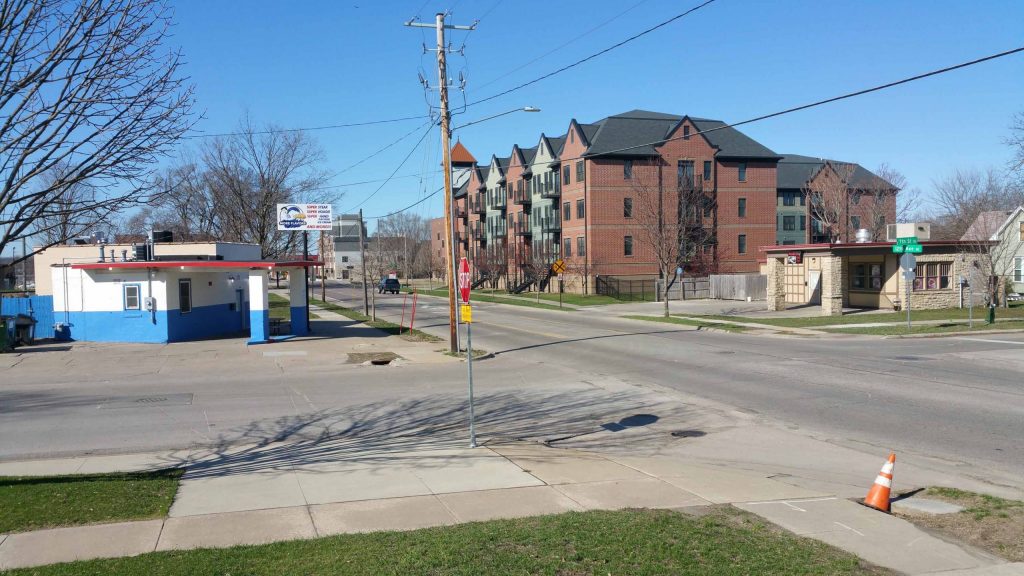
Barely a block northeast of NewBo is the Oak Hill Neighborhood. Two service stations face each other along 12th Ave SE and the corner of 7th St SE. This neighborhood had an eclectic ethnic mix and a blend of homes, businesses, and civic buildings (according to a History Center marker in an adjacent park).

I couldn’t locate any specific information about these structures, but I estimate they were likely erected in the latter part of the 1930s. They have a plain style that could easily be the precursor of the box construction stores we have today. Both are used as restaurants (More Flavors and Panda Lin).
“Standardization went hand in hand, however, with the growing acceptance of modern architecture, and by the end of the 1930’s the eccentric, one-of-a-kind stations had almost all given way to some sort of sleek, streamlined design. The crisper, sharper lines of modernism, as romanticized in these early streamlined buildings, seemed suited to what the oil companies increasingly wanted to sell – the stations became signs of speed and the romance of the fast, open road” (5).
Mound View Neighborhood – 1602 1st Ave NE
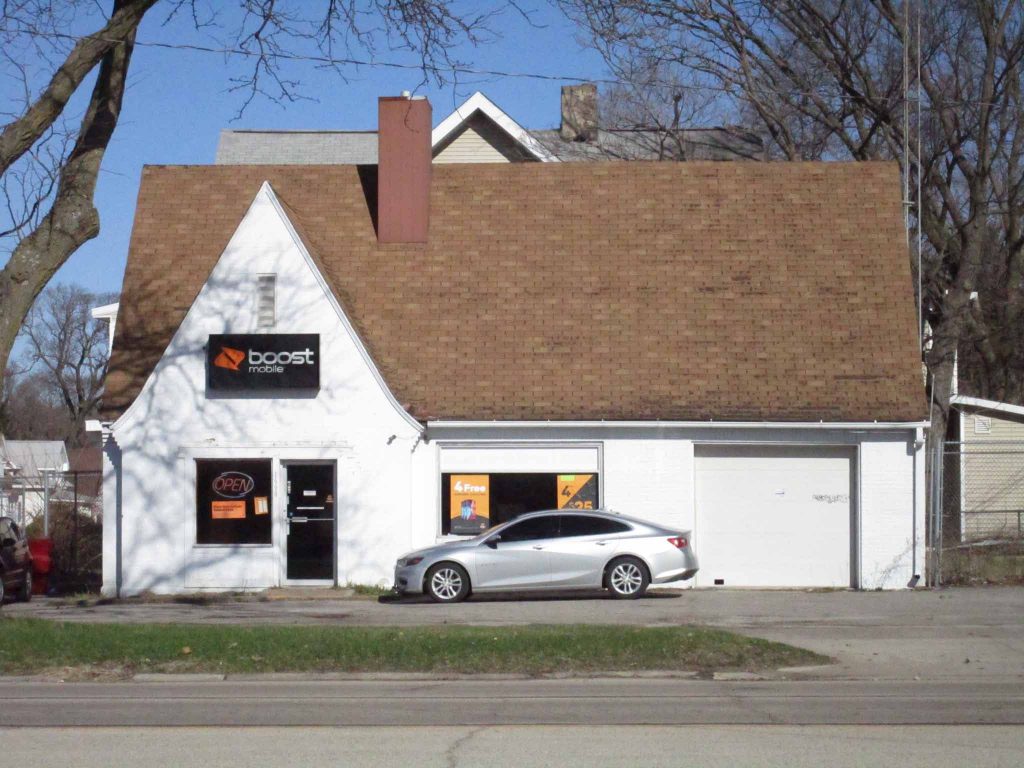
I hesitate to add this last one because I could not confirm its history, but wouldn’t you agree 1602 1st Ave NE looks suspiciously like an old service station? It has that 1920s residential vibe while clearly being a commercial structure. Plus 1st Ave was also the original Lincoln Highway route.
Furthermore, this location near 16th ST NE is a stone’s throw from Coe College. Coe was established in the 1851 and would have been a source of car traffic in the early 1920s. I don’t know – your guess is as good as mine!

One could argue these buildings aren’t noteworthy or important. They weren’t designed by famous architects and they don’t adhere to a particular style. They neither dominate skylines nor serve as displays of civic pride (check out my post on Veterans Memorial or the Linn County Courthouse for that!). However, they are a patchwork of markers that show how transportation evolved in America – and I think that’s worth examining and preserving.
“They are one of America’s most common commercial building types and are emblematic of the twentieth century. Surviving historic stations are physical reminders of the transportation revolution and the influence of increased mobility on the landscape. They are a reflection of car culture, pop culture, corporate standardization, and an era of customer service that today seems quaint” (1).
Go check these out, take a pic, and tag @herringbonefreelance on Instagram or Facebook! Or tag me in photos of cool gas stations in your community– I would love to see them!
References
- The Preservation and Reuse of Historic Gas Stations, National Park Service: nps.gov/tps/how-to-preserve/briefs/46-gas-stations.htm
- Discovering Historic Iowa Transportation Milestones, Iowa DOT: https://iowadot.gov/histbook.pdf
- Historic Auto Trails – Iowa Registered Routes, Iowa DOT: https://iowadot.gov/autotrails/Iowa-Historic-Routes/Registered-Routes
- Historic Auto Trails – Iowa Registered Routes, Route R, Iowa DOT: https://iowadot.gov/autotrails/Iowa-Historic-Routes/Registered-Routes#r
- Iowa Gas Stations, Roadside Architecture: https://roadarch.com/gas/ia.html



